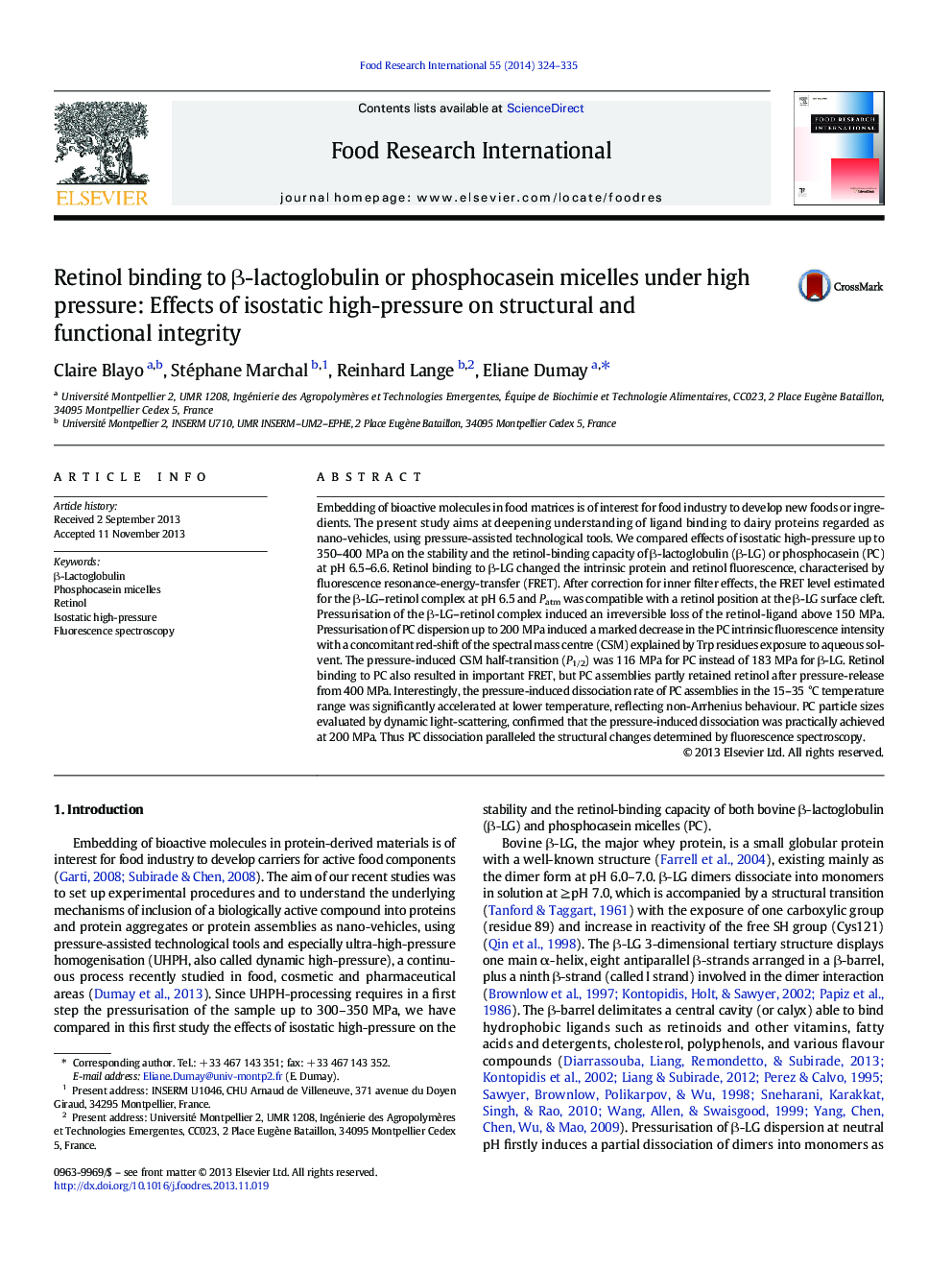| کد مقاله | کد نشریه | سال انتشار | مقاله انگلیسی | نسخه تمام متن |
|---|---|---|---|---|
| 6397916 | 1628489 | 2014 | 12 صفحه PDF | دانلود رایگان |

- Fluorescence spectroscopy allowed follow retinol binding to β-LG under pressure.
- β-LG lost irreversibly its retinol ligand above 150 MPa.
- Conversely PC assemblies partly retained the retinol after pressurisation at 400Â MPa.
- Pressure-jumps underline faster PC micelle dissociation at 90-180 MPa and 15 °C.
- Pressure-induced dissociation of PC micelles paralleled their structural changes.
Embedding of bioactive molecules in food matrices is of interest for food industry to develop new foods or ingredients. The present study aims at deepening understanding of ligand binding to dairy proteins regarded as nano-vehicles, using pressure-assisted technological tools. We compared effects of isostatic high-pressure up to 350-400 MPa on the stability and the retinol-binding capacity of β-lactoglobulin (β-LG) or phosphocasein (PC) at pH 6.5-6.6. Retinol binding to β-LG changed the intrinsic protein and retinol fluorescence, characterised by fluorescence resonance-energy-transfer (FRET). After correction for inner filter effects, the FRET level estimated for the β-LG-retinol complex at pH 6.5 and Patm was compatible with a retinol position at the β-LG surface cleft. Pressurisation of the β-LG-retinol complex induced an irreversible loss of the retinol-ligand above 150 MPa. Pressurisation of PC dispersion up to 200 MPa induced a marked decrease in the PC intrinsic fluorescence intensity with a concomitant red-shift of the spectral mass centre (CSM) explained by Trp residues exposure to aqueous solvent. The pressure-induced CSM half-transition (P1/2) was 116 MPa for PC instead of 183 MPa for β-LG. Retinol binding to PC also resulted in important FRET, but PC assemblies partly retained retinol after pressure-release from 400 MPa. Interestingly, the pressure-induced dissociation rate of PC assemblies in the 15-35 °C temperature range was significantly accelerated at lower temperature, reflecting non-Arrhenius behaviour. PC particle sizes evaluated by dynamic light-scattering, confirmed that the pressure-induced dissociation was practically achieved at 200 MPa. Thus PC dissociation paralleled the structural changes determined by fluorescence spectroscopy.
Journal: Food Research International - Volume 55, January 2014, Pages 324-335